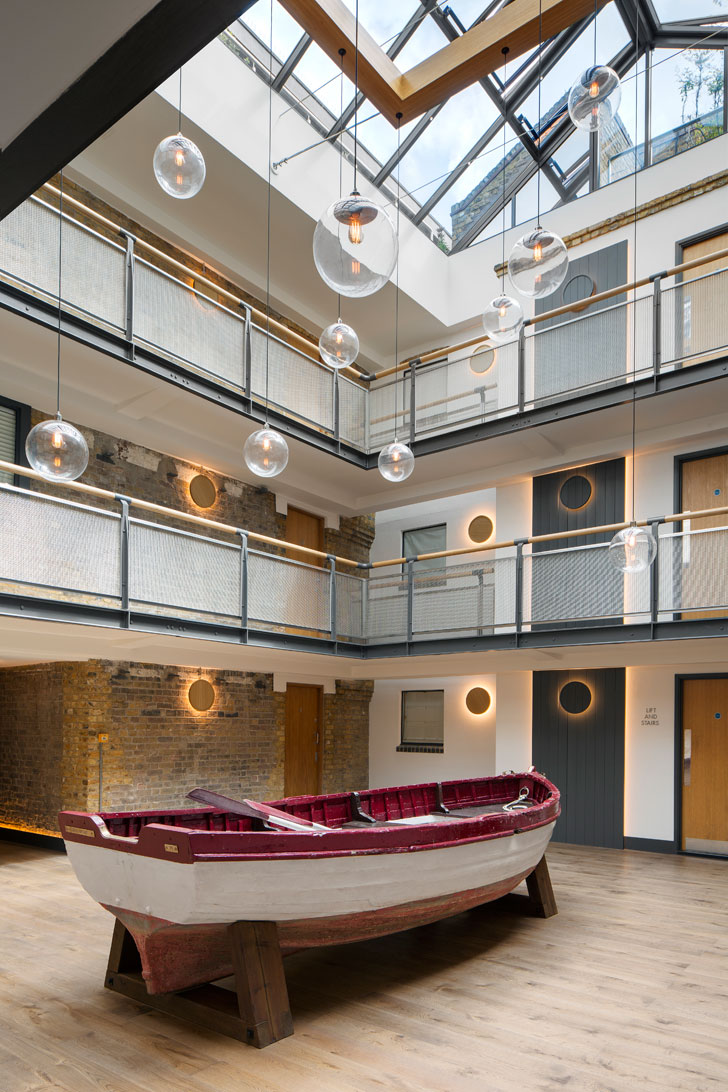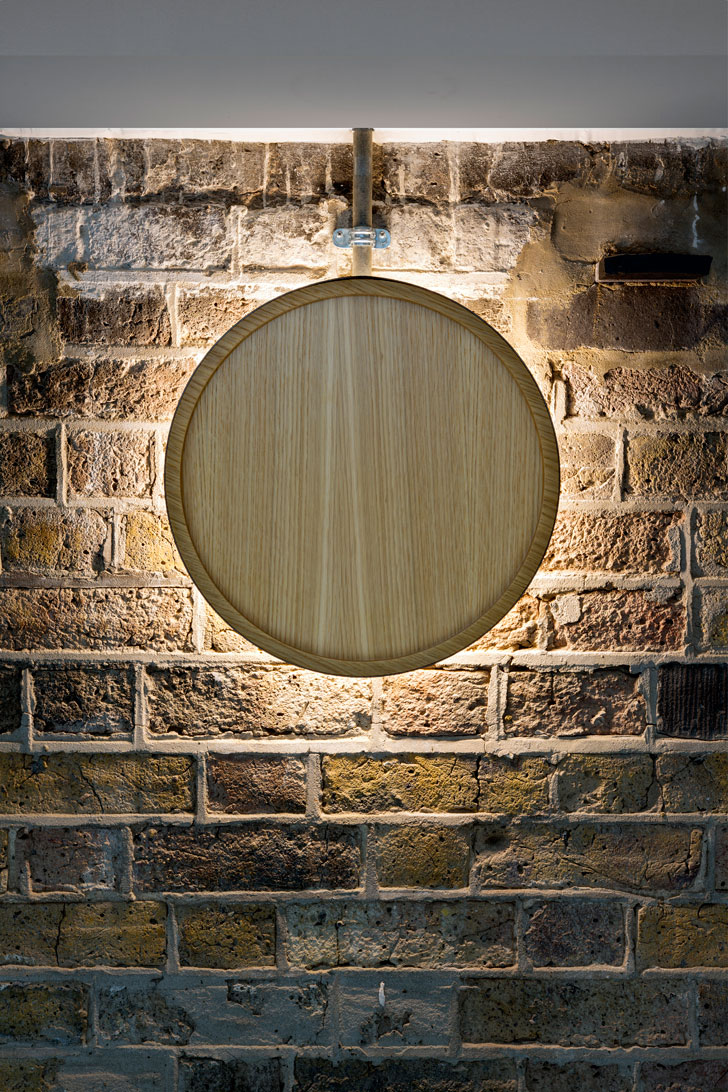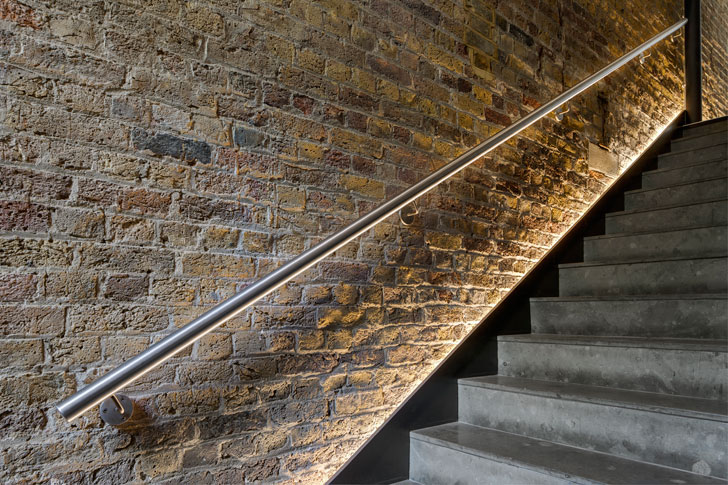Get Inside Design
Insights into the world of interior design - straight to your inbox.
How to light your home: an expert's guide
One of our interior designers illuminates us about the options
Good lighting is the hidden ingredient of interior design. It may not be obvious but it can make all the difference to the mood of a home, and improves its efficiency and comfort. All our designers at interiordesigners.net have knowledge and experience of lighting homes – contact us and we will find the one that matches your requirements, budget and style.
We have worked with Paul Langston, one of our designers, on numerous projects over the last six years. He has made lighting a speciality and shared his thoughts on how good lighting choices benefit the overall interior design of a home. We recently matched Paul on a project to refurbish the common parts of a converted wharfside building in Wapping, East London. Lighting played a key role in the new decoration, as you'll see in the photos below.

Paul Langston designed the lighting scheme in the atrium of this old wharfside building in Wapping. The residents were keen to rescue and renovate the old lifeboat to reflect its maritime past
Paul’s six-point guide to lighting in your home
1. Plan the lighting right from the start
‘Lighting is one of the very first design elements my team and I consider when embarking on a new project. It goes hand-in-hand with other areas of planning and needs to be worked out early on. When considering lighting in interiors, the specific need and purpose determines the specification. It is important to think about how the use of lighting impacts on the design – whether it’s intended for relaxing, practical use, or a combination of both. As projects often grow organically, clients may not always realise the full lighting requirement until later in the design. Therefore, foreseeing future wiring requirements can pay off in the planning stage, especially if the cabling cannot be hidden. Sometimes additional fittings and effects are needed, so we try to anticipate this early on by running additional cables so there is an option to add more fittings later.’
2. Zone your spaces with lighting
‘In open-plan spaces, I often use lighting to zone areas. This helps to distinguish each space and give identity and personality to specific areas. For example, a seating area can be zoned by top and tailing furniture with table and floor lamps. Similarly, a pendant light centrally hung above a dining table can really help to define the dining area and add interest and structure.
'To complete the zoning effect, the lighting across an open plan space needs to be fully controllable in terms of circuits and dimming. In an open-plan kitchen and living space, it may be desirable to turn down or turn off the lights in the kitchen when relaxing in front of the TV, for example.’

Paul designed and made this eclipse light specifially for the Wapping project
3. Be flexible in your approach to lighting
‘There are endless variables when it comes to lighting, so I try and make lighting schemes as flexible as possible. Sometimes the position of the light is fine but the mood is wrong. I often play around and adjust the brightness, intensity, colour and temperature of lights after the first and second fix to create different moods.
‘On a recent project in an old industrial building, digging into the walls to run the cabling wasn’t an option, so we designed a hollow skirting board with enough space to run the cabling through. This meant that all the cables were hidden but because the top could be removed, more could be added or taken away in future.’
4. Do your research
‘There is more choice with lighting now than ever before. Also, technology has improved dramatically in recent years, leading to significant developments. For example, a single white LED can now feature a whole range of different whites within a single fitting. However, more features and greater choice does not guarantee an improvement in quality. It pays to do solid research to cut through what can be an overwhelming volume of options to identify the reliable brands and products. Many clients are aware of the power of lighting and how it can change the mood and atmosphere of a home but may not have the knowledge to deliver it.
‘There is no substitute for seeing how lights and fittings work before buying them. If my design features a complex lighting scheme, I often suggest that clients come with me to a showroom to view and interact with the lighting options first hand. Some showrooms have sealed environments where you can observe and trial different lighting effects in isolation. Ultimately, this can increase the spend on lighting but for the right advice, it can be worthwhile. Similarly, I might involve a specialist lighting designer if the scheme is complicated. I’m an interior designer foremost, so am happy to call on extra expertise in the form of a specialist lighting designer when needed for a complex project.’

The lighting behind the skirting board of this staircase in Paul's Wapping project softens the industrial architecture and provides a directional pull
5. Layer your lighting scheme
‘Rooms often have multiple uses. Layering is about having a variety of different light sources and the appropriate controls to fulfill a range of needs: task lighting for practical use, ambient lighting for changing the mood and accent lighting to highlight certain areas or objects.
‘In the bedroom, task lighting may be required for practical purposes such as reading but at other times, it may be desirable to create a more calming or intimate mood, so the lighting needs to be controllable – in terms of separate circuits and also dimmability. In the living room, there are times when bright light is required – for cleaning, say – but at other times there may be a need to make adjustments to brightness and emphasis – for example, to create a calm, low level environment for watching TV or employing a more localised light source for reading. The kitchen needs to be set up to provide task lighting solutions, which can be delivered through the application of recessed spotlights to create a pool of light – or alternatively, hidden LED strips which create a continual glow. In the bathroom, I always choose a forward facing light on the mirror, preferably integrated in the mirror, as it’s more flattering.’
6. Finally, don’t neglect the ‘forgotten’ areas.
‘Corridors and hallways are sometimes perceived as rooms we pass through, rather than live in. Recently I designed a flat in Victorian conversion, which had a narrow corridor with high ceilings. We could afford to lose a little of the height, so I dropped the ceiling to create a shadow gap and inserted an LED strip to soften the mood. Then I added gallery spotlights on tracks so the client could hang art on the walls. It became a place you want to spend time in rather than quickly pass through.’
At the end of the Wapping project we received this testimonial: 'We are very happy with our new atrium. Paul and his team did a marvellous job, but your service made it all the more easy to find the right person for the project. Thank you so much for your invaluable help.' See more testimonials about our service here.
Next time, we consider the challenges and opportunities of designing a bathroom.

